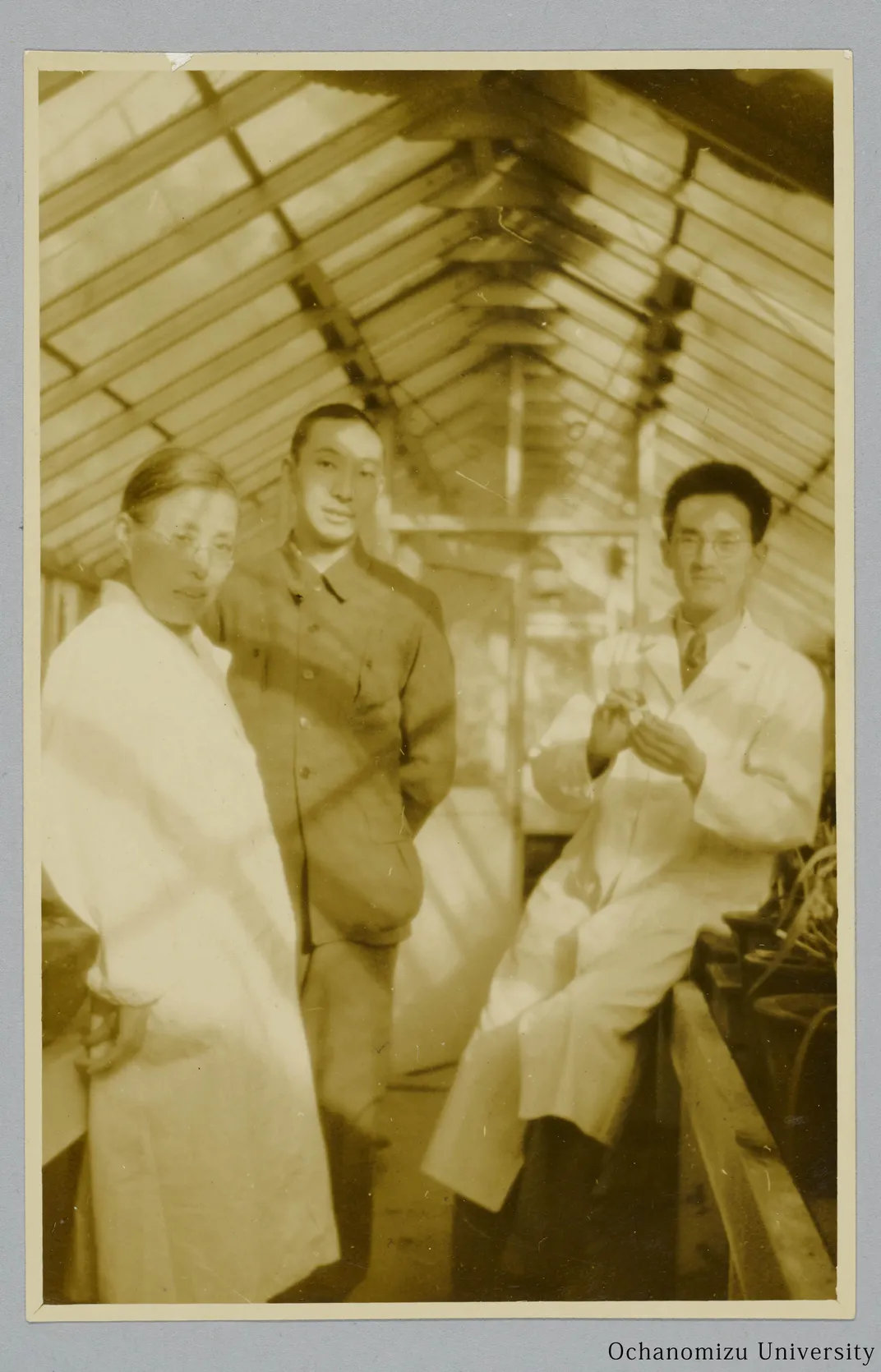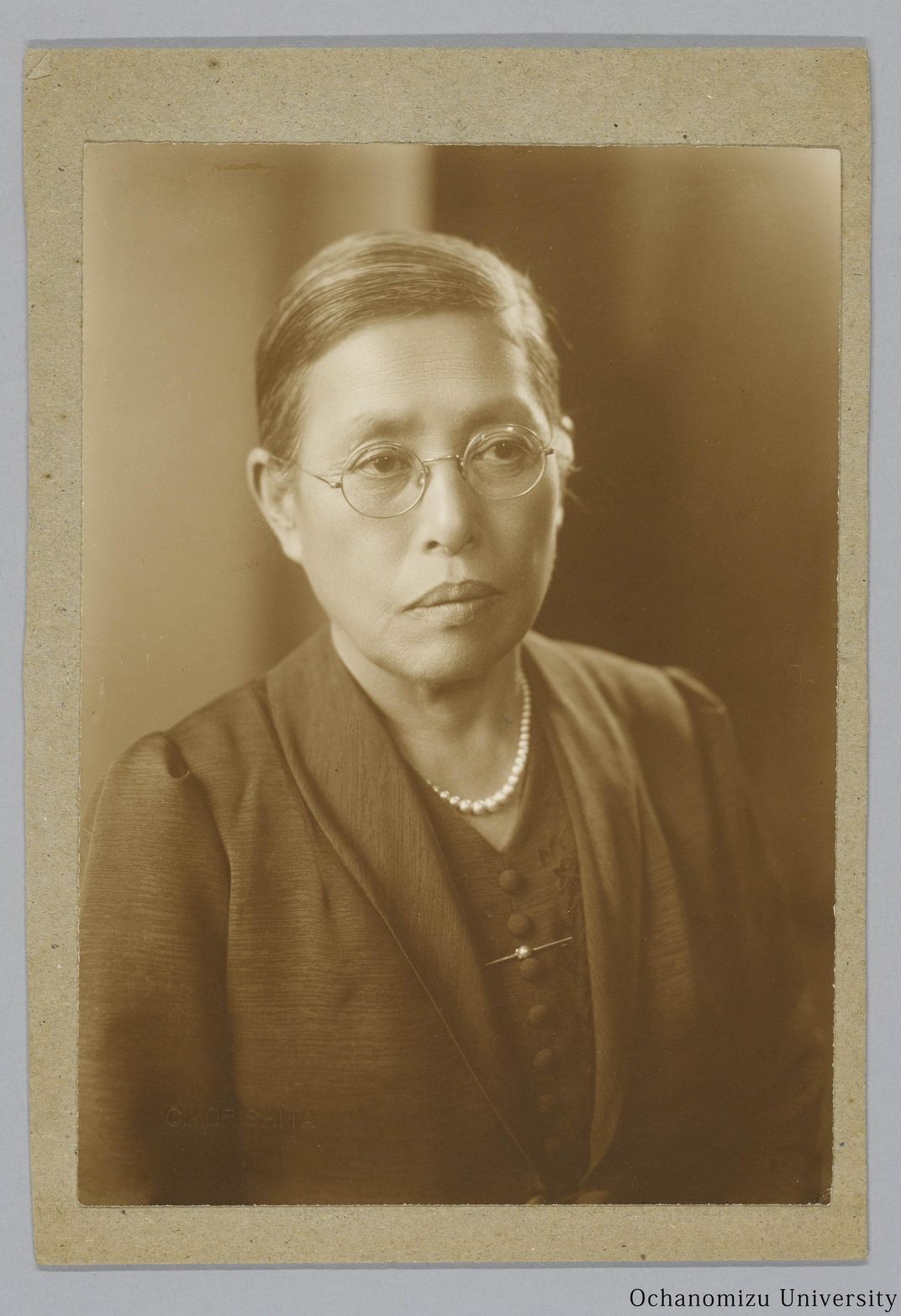How a Pioneering Botanist Broke Down Japan’s Gender Barriers
Kono Yasui was the first Japanese woman to publish in an academic journal, forging a new path for women in her country
/https://tf-cmsv2-smithsonianmag-media.s3.amazonaws.com/filer/72/54/72542b9f-d4a7-4be0-a749-9f25d55d2d44/yk-6022-0001.jpg)
When Kono Yasui received her doctoral degree in 1927 from the Tokyo Imperial University, she said: “Blessed by the understanding of those around me and with nothing to encumber me, I have simply plodded along a path of my own choosing.”
That last part was accurate, if an understatement: At 47, Yasui had just become the first Japanese woman ever to earn a PhD in a science. But her path was not entirely unencumbered. She spent much of her life navigating an education system and culture that worked to cultivate women as wives and mothers—rather than leaders of scientific inquiry.
From an early age, Yasui showed an interest in learning. She found an encouraging atmosphere for her studiousness in her parents, who owned a shipping business in the port town of Kagawa Prefecture, writes Miwae Yamazaki in the 2001 compilation Blazing a Path: Japanese Women’s Contributions to Modern Science. In elementary school, Yasui’s father gave her a copy of Encouragement of Learning by Fukuzawa Yukichi, a prominent intellectual and founder of Keio University. Yukichi advocated for education reform based on his philosophical principles of independence and equality and argued for women’s equality with men.
Yasui must have been bright, indeed, to read such a philosophical text as a young girl. It is also clear that she was raised with the belief that she was not inferior to men.
Yasui was first encouraged to pursue learning at home to supplement an education system that failed to do so. She grew up during the Meji period (1868-1912), in which Japan underwent rapid changes in attempts to modernize the country’s industry and economy. A core aspect of the modernization project was education reform. “In order to build new industries, science and engineering were (naturally) seen as essential, so the key was to establish education institutions, modelled upon Western Universities/colleges,” write authors Naonori Kodate and Kashiko Kodate in Japanese Women in Science and Engineering: History of Policy Change.
Modelling an education system based on that of the West, however, was not necessarily promising for women. At this point, American girls’ primary education did not typically include science and mathematics and many universities in Europe and the United States still excluded women.
Education for girls and women in Japan was equally deficient: girls attended separate schools from boys, and their education was predominantly meant to produce ryōsai kenbo: ‘good wives and wise mothers.' Designating women as wives and mothers meant that, according to the Kodates, “[t]here was no incentive for parents to give [educational] aspirations to their daughters ... and, indeed, social institutions did not provide women with equal opportunities.”
Prefectures were not required to offer secondary education for girls until 1899. Women were not allowed in Imperial Universities—similar to the American Ivy Leagues—until 1913 (even then there were only three). If girls did receive occupational training, it was to become teachers, a career that safely stayed within society’s gendered expectations for women.

Despite this unequal education system, Yasui made the most of the opportunities she was given. In 1898, she graduated from Kagawa Prefecture Normal School (the Japanese equivalent of American high school) and went on to study science and mathematics at Tokyo Women’s Higher Normal School (TWHNS), which had been upgraded to college status in 1890. Before she had even completed her college degree, she published her first paper “Weber’s Organ of Carp Fish” in Zoological Science, becoming the first woman to publish in a Japanese science journal.
In 1907, she took an assistant professorship at TWHNS. In addition to her teaching duties, and despite not having the support of a research university, Yasui also embarked on her own research in plant cytology, the study of plant cells. In 1911, after years of independent research, Yasui set another record by publishing her study “On the Life History of Salvinia Natans” in the British journal Annals of Botany, which included 119 drawings of microtome cut sections. It was the first time a Japanese woman published in any foreign journal.
In light of Yasui’s accomplishments, TWHNS petitioned the Ministry of Education to support Yasui in studying overseas since she could not do so at an Imperial University. At first, the ministry did not approve. This was likely due to deeply embedded assumptions that women could not be successful in scientific fields; In the book chapter “Women Scientists and Gender Ideology,” anthropologist Sumiko Otsubo found that between 1875 and 1940, the Ministry of Education funded a total of 3,209 people for study in Europe and the U.S., and only 39 of those were women, most of whom studied English or physical education.
With the help of Kenjiro Fuji, a cytologist (a scientist who studies the structure and function of living cells) at University of Tokyo, the Ministry approved Yasui’s request for overseas funding, but with the curious agreement that she add “research in home economics” along with science as her area of study. She also made another, even more unusual agreement with the Ministry: that she not marry but dedicate her life to her research instead.
Both of these compromises were highly gendered; she at once had to efface her conferred cultural role as a ‘good wife and wise mother’ and obscure her actual scientific work through a veil of domesticity.

In 1914, Yasui arrived at the University of Chicago. For one year, she studied the morphology of the aquatic fern species azolla in the Department of Botany. She intended to study in Germany next, but derailed by World War I, she instead landed in Radcliffe College in Cambridge, Massachusetts in 1915 where she studied under botanist Edward C. Jeffrey of Harvard. Under Jeffrey’s mentorship, Yasui focused her studies on coal and adopted Jeffery’s method for slicing hard materials for microscopic study.
When Yasui returned to Japan in 1916, she continued her studies of Japanese coal and once again took up her teaching post at her alma mater TWHNS. In 1919, she received a grant from the Ministry of Education to continue her research in cytology—yet another unprecedented achievement for a woman. Over the course of her research, she discovered six ancient plant species, including a species of Sequoia that she uncovered in a coal field.
The main crux of her research, however, was the changes that plant tissue underwent during the carbonization process in which plant matter becomes coal. In her profile, Yamazaki writes that Yasui collected many of her specimens herself, descending into coal mines to choose her own samples for study.
In 1927, she published her decade-long botanical study of coal, a collection of nine papers that ultimately showed that it was the work of geological upheavals, not microbes, in which plants turned to sediment for gradual carbonization through interaction with its surrounding matter. In recognition of her pioneering research, Tokyo Imperial University awarded Yasui a doctoral degree in science even though she was not an official student.
.....
Over the course of her career, Yasui broke ground in both research and teaching. She published a total of 99 papers and received multiple honors for her work. Meanwhile, she campaigned for women’s higher education, ultimately helping to establish TWHNS as a national research university for women in 1949, renamed Ochanomizu University. There she became a professor of science and eventually professor emeritus upon her retirement in 1952.
Yet when it came to advocating for women in science, Yasui’s efforts can seem ambivalent. While she was actively campaigning for a women-centered research university, she rejected the efforts to establish women only scientific societies. Sumiko Otsubo writes that Yasui believed that women only groups exacerbated inequality between men and women and further implied that women’s work was inferior; when asked to join the Society for Women Scientists, she declined.
Yamazaki and Otsubo both report that Yasui strictly avoided seemingly special treatment of her female students and refused to treat them like girls. At the same time, she and fellow scientist Chika Kuroda, the second Japanese woman to earn a PhD in science, established the Yasui-Kuroda Scholarship, a fund to support women’s work in the natural sciences. Yasui’s ambivalence about how to achieve equality was undoubtedly informed by her own professional experiences, in which equality and respect came by rejecting Japanese cultural standards for womanhood.
Despite her prolific research publications, Yasui was taciturn when it came to writing about herself, meaning that most of what was written about her life was written by others. Yet the few words we have of hers are telling. “I do not seek fame, nor do I desire high status," she said, as quoted by Yamazaki, "but will be content to know that my work lives on after me.”
This rings true for both her scientific work and her efforts to raise the status of women’s education. Despite her conflicting ideas on how best to achieve gender equality, Yasui worked in many ways to helped open the field a little wider—so that if a woman wanted to make the compromises Yasui did, it would be of her own choosing.